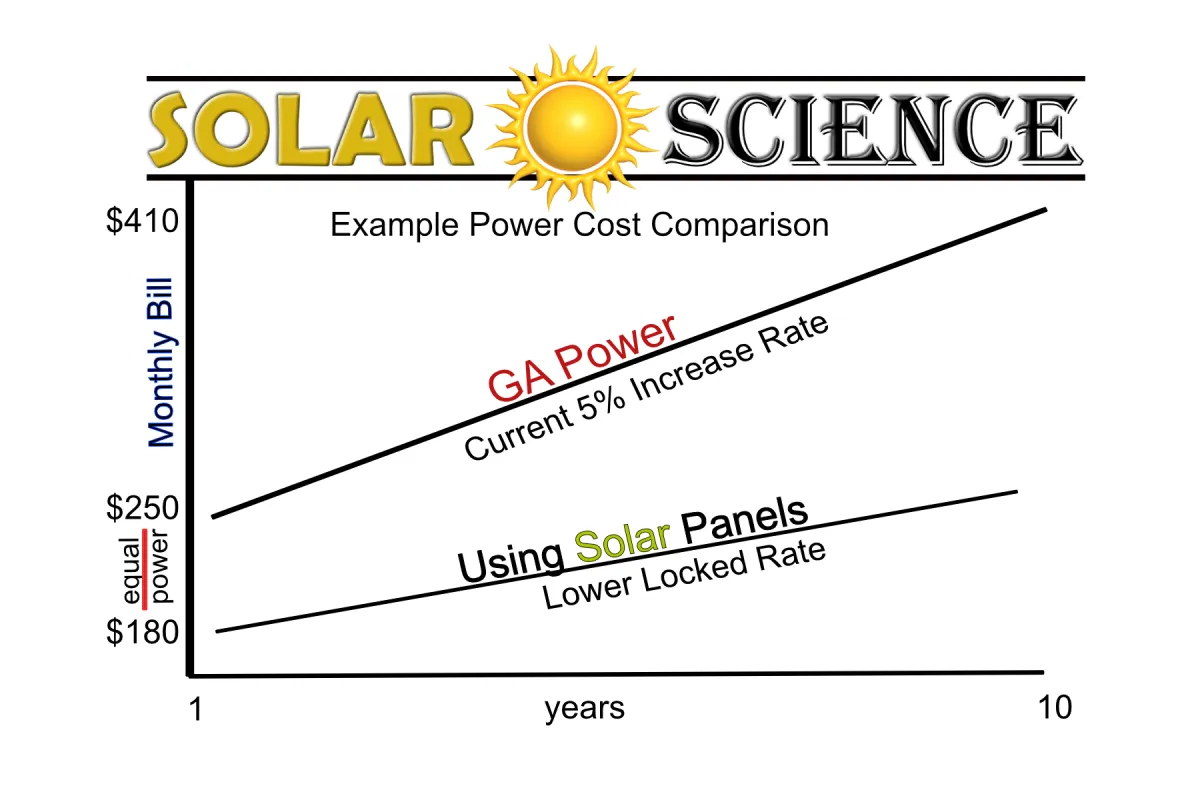
GOING SOLAR in GA
Is Solar Right For Your Home or Commercial Property?
Ask Us...
Schedule a Quick Energy Comparison Between
Solar Energy
&
Power Grid
We'll stop by to show you the numbers customized for your property!
Why Go Solar? ☀️
💰 Save Money on Energy Bills
💰 Lock in Lower Rate Forever
💰 Avoid Unpredictable Rate Increases
⚡ Energy Independence & Reliability
🌍 Reduce Your Carbon Footprint
.
🏡 Increase Property Value
📉 Federal & State Incentives Available
.
🛠️ Low Maintenance & Long-Term Benefits
🔋 Battery Storage for Extra Security


If you're too busy for an in-person visit, you also have the option of submitting a few pics online and receiving your Solar Proposal remotely.
How Much Does Solar Save In Georgia?
How much money does the average Solar Panel System Save?
Switching to solar can save you a significant amount of money over time. If you currently pay $250 a month for electricity and your utility company increases rates by 5% annually, your power bill will climb to over $400 a month in 10 years. Over that decade, you’ll have paid more than $34,000 to the power company. In contrast, by switching to solar and locking in a flat rate of just $180 a month, you would only spend $21,600 over 10 years. That’s a savings of over $12,000 — and your rate never goes up. Plus, you gain energy independence and predictable bills.
The best option for going solar in Georgia is a Power Purchase Agreement (PPA) Homeowners can go solar with no upfront cost only paying for the power it produces. Instead of buying the panels, you lock in a predictable energy rate that typically increases by just 2.99% per year. That’s far better than recent hikes from the power company—some as high as 30% in a single year. With a PPA, you avoid wild rate spikes, gain energy cost stability, and can save thousands over time—all while helping the environment and increasing your home’s appeal.
Solar is not for everyone or every property. We evaluate your savings potential and only recommend solar if you have guaranteed savings.

Total Solar Installs In USA
Approximately 4.85 million U.S. households have adopted solar energy.

Other Environmental Benefits
Reduces air pollutants such as sulfur dioxide (SO₂), nitrogen oxides (NOx), and particulate matter, which contribute to smog, acid rain, and respiratory diseases.
Lowers demand for water-intensive power sources, such as coal and natural gas plants that consume large amounts of water for cooling..

